Yala National park | The official traveler's portal
Yala National Park is home to the highest concentration of leopards in the world, making it the number one destination for spotting these incredible cats. It’s estimated that around 80 leopards reside in the park, so you might just be lucky enough to spot one on your safari.
Shaggy black coated Sri Lankan Sloth Bear is popular amongst animals in Yala National Park. Exclusively found in the subcontinent of India, these bears mainly consume insects. However, berries, roots, and nuts are also part of its meal. With only about 500 bears living in the wild, they have been declared vulnerable by IUCN Red List.
Sri Lankan elephants are one of the three subspecies classified under Asian elephants and are also the darkest out of the lot. Due to various reasons like poaching, human-elephant conflict these giants are now an endangered species. Considered as the largest among the Asian elephants, they live up to 60 years of age. Herds of elephants can be spotted at Yala, while a visit to Minneriya and Udawalawa National Parks will also give you the opportunity to spot them.
Sri Lankan axis deer are active primarily during early morning and again during the evening, but they are commonly observed near waterholes anytime. The Sri Lankan axis deer eats primarily grasses, but it also eats fallen fruits and leaves. The Sri Lankan axis deer graze closely with langur, peacock, wild buffalo, and sambar deer. In Yala National park they usually live in groups of between 10 and 60 animals, though herds may include up to 100 animals. Axis deer are important prey for the Sri Lankan leopard. It is also prey for sloth bears, jackals, and crocodiles.
The Sambar is one of the largest deer species distributed mainly in Asia, and it has been listed as a vulnerable species. These hardy species are seen congregating in large herds in the Yala National Park.
The Sri Lankan jackal, a subspecies of golden jackal, is found in southern India and Sri Lanka. In southern India, males measure around 29 inches and females around 26½ inches, weighing between 12-19 lbs. They are slightly larger in Sri Lanka. Their winter coat is shorter, smoother, and darker on the back with white speckles. Moulting happens earlier and the color does not lighten compared to their mainland counterparts.
The mugger crocodile can be seen in Yala National Park. Aslo the largest Mugger crocodile in Sri Lanka is in the Yala National park. The mugger crocodile, found across the Indian subcontinent and neighbouring regions, is one of India’s three crocodilian species, alongside the gharial and saltwater crocodile. Typically inhabiting freshwater bodies like lakes, rivers, and marshes, it’s a medium-sized species with males reaching lengths of up to 4.5 meters, though rarely exceeding 3.7 meters. Known for its broad snout and heavily armored appearance, adults sport dark grey or brown coloring, while hatchlings are tan.
Land monitors reach a maximum snout to vent length of about 140 cm in Sri Lanka and large specimens can weigh over 10 kg. Land monitors spend the nights in burrows, where their body temperature decreases. The following morning they raise their body temperature by basking in the sun before commencing any activity.
The Ruddy Mongoose is slightly larger than the Indian Grey Mongoose and has a black tip to its tail. It is like someone has dunked it in a bottle of ink. This is the best distinguishing feature to be able to tell the difference. Some of them have very dark coats whilst others are of a lighter brown and grey color.They hunt both in daylight as well as at night. The Indian Grey Mongoose does not have a black tip to its tail. Most have a grey fur body but others have a more sandy earthy look. This can be their natural colour but it can also be because they have been digging in the orangey red soil
Yala, a key among Sri Lanka’s 70 Important Bird Areas, hosts 215 species, including six endemics like the Sri Lanka grey hornbill and junglefowl. The park’s wetlands attract 90 waterbird species, with notable sightings like the black-necked stork and pelicans. During the northeast monsoon, migratory flocks like northern pintails and godwits join resident species. Raptors such as the crested serpent eagle soar overhead, while forest-dwelling birds like hornbills add to Yala’s avian diversit
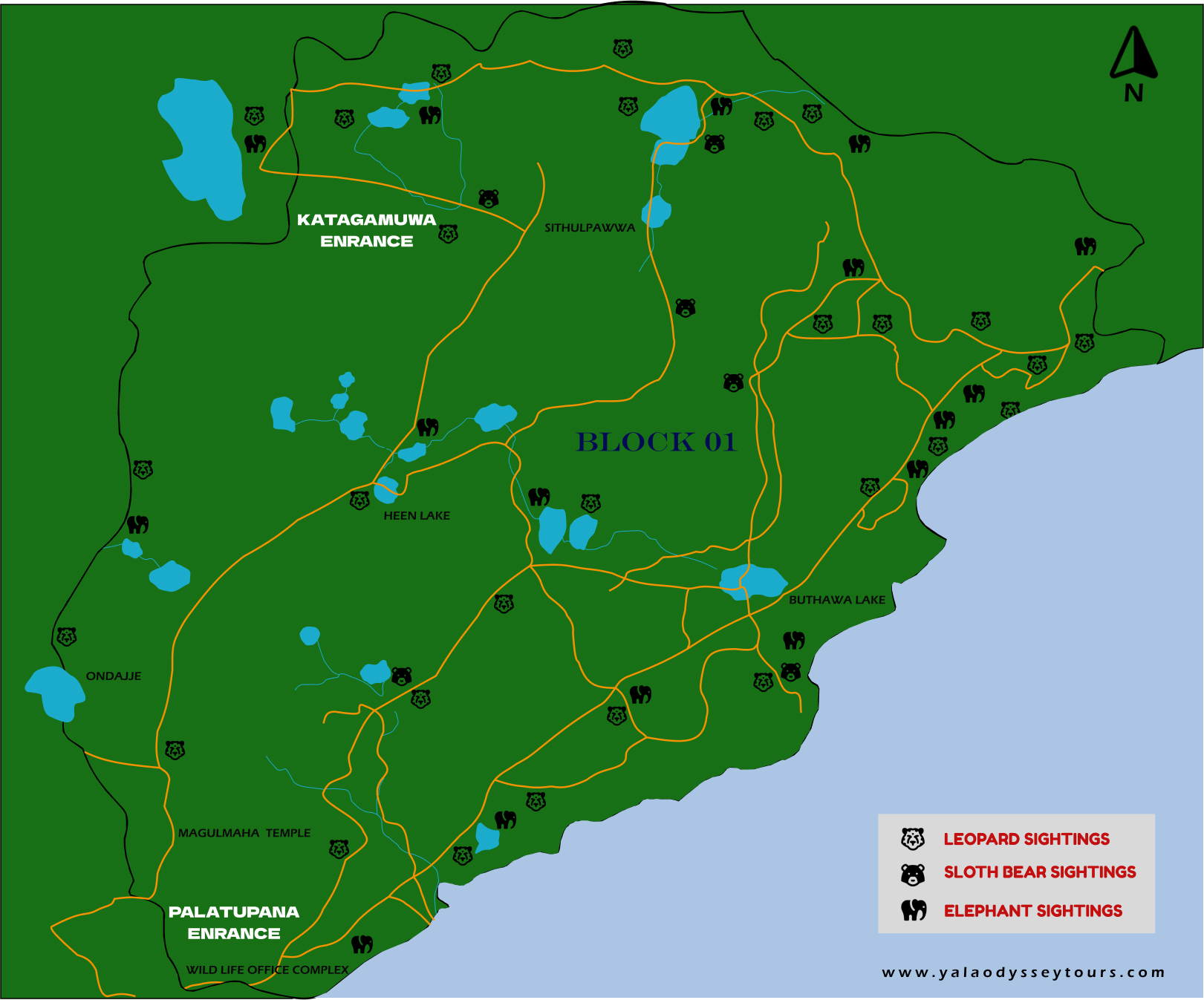
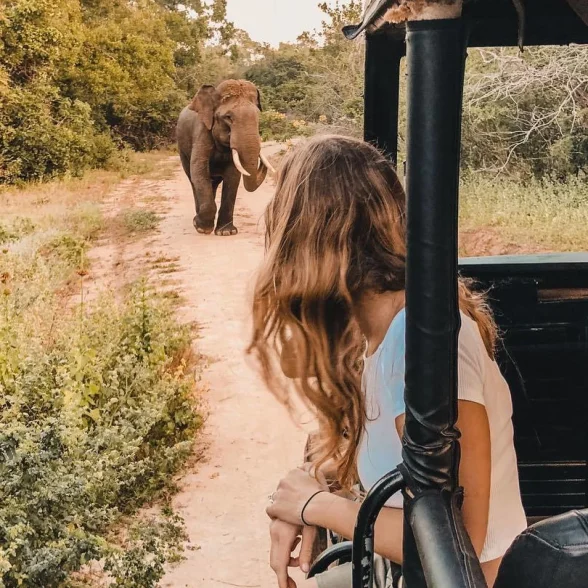
Your journey through Yala focuses on the safari excursion, offering an unforgettable experience. It’s important to note that this isn’t a staged event, and the wildlife isn’t on a schedule for your convenience. It’s the element of unpredictability and the thrill of adventure that defines this wildlife encounter. To glimpse the inhabitants of the jungle, timing is crucial, and a patient approach is essential.
While the majority of the extensive coastal area surrounding the park remains inaccessible to humans, specific locations within the park permit visitors to disembark. These designated areas provide an opportunity to stretch your legs and enjoy a leisurely stroll along the picturesque sandy shores. One such area accessible to the public was previously occupied by a bungalow, tragically swept away by the Asian Tsunami along with its inhabitants. Today, remnants of the destruction and a memorial dedicated to the deceased offer visitors a poignant moment of reflection and solitude.
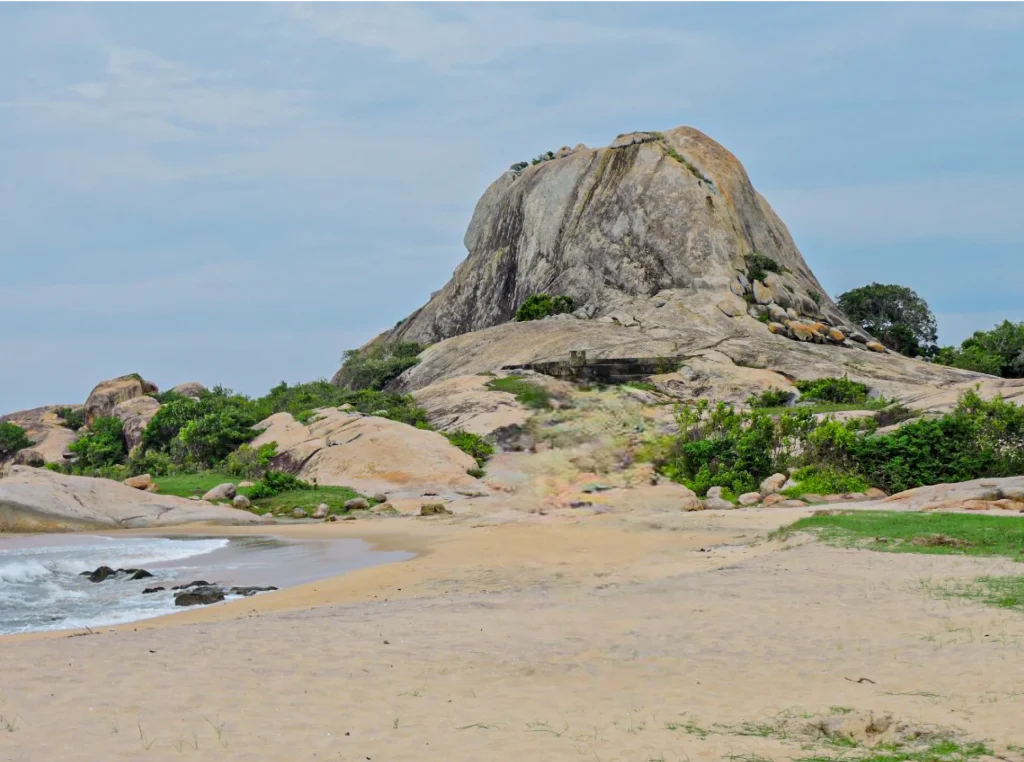
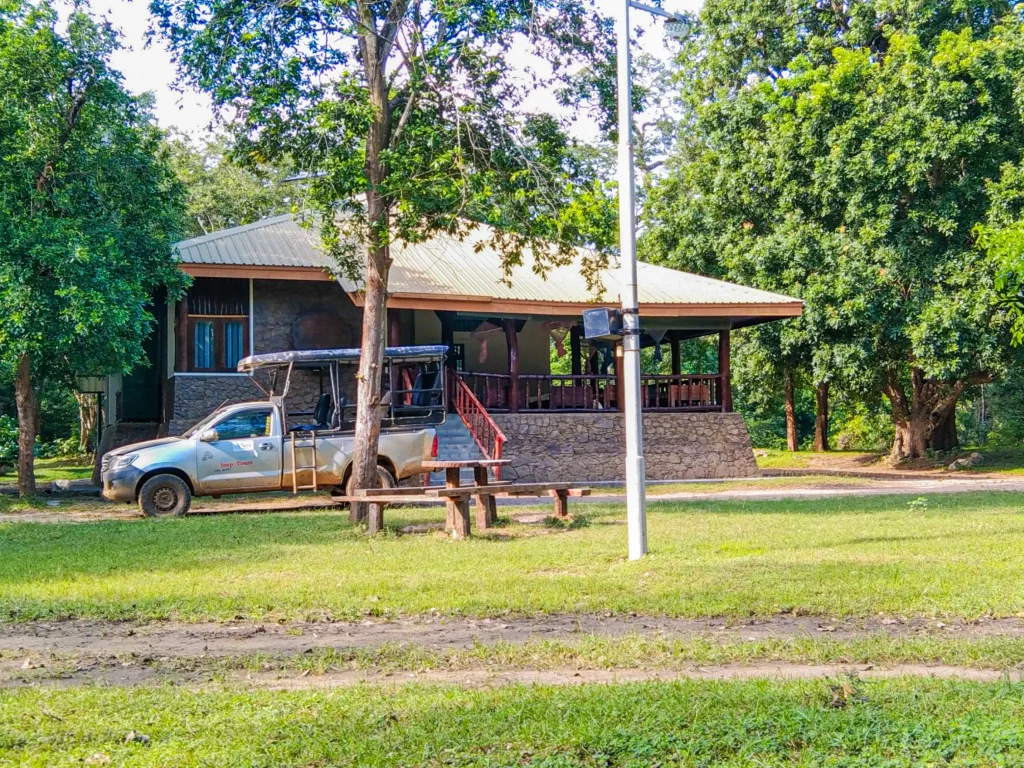
Experience an unparalleled night in the heart of the animal kingdom with our wildlife bungalows, nestled within the park’s serene surroundings. These accommodations offer a back-to-basics experience, promoting open space and close proximity to nature. Book your stay here to enjoy the privilege of being out on the beaten track before the crowds arrive, ensuring an unforgettable adventure for nature enthusiasts.
The name Sithulpauwwa derives from the term ‘Chittalapabbata,’ signifying the abode of tranquility. This ancient rock temple holds significant religious reverence among devotees. It is believed that in antiquity, this sanctuary accommodated a community of 12,000 monks.
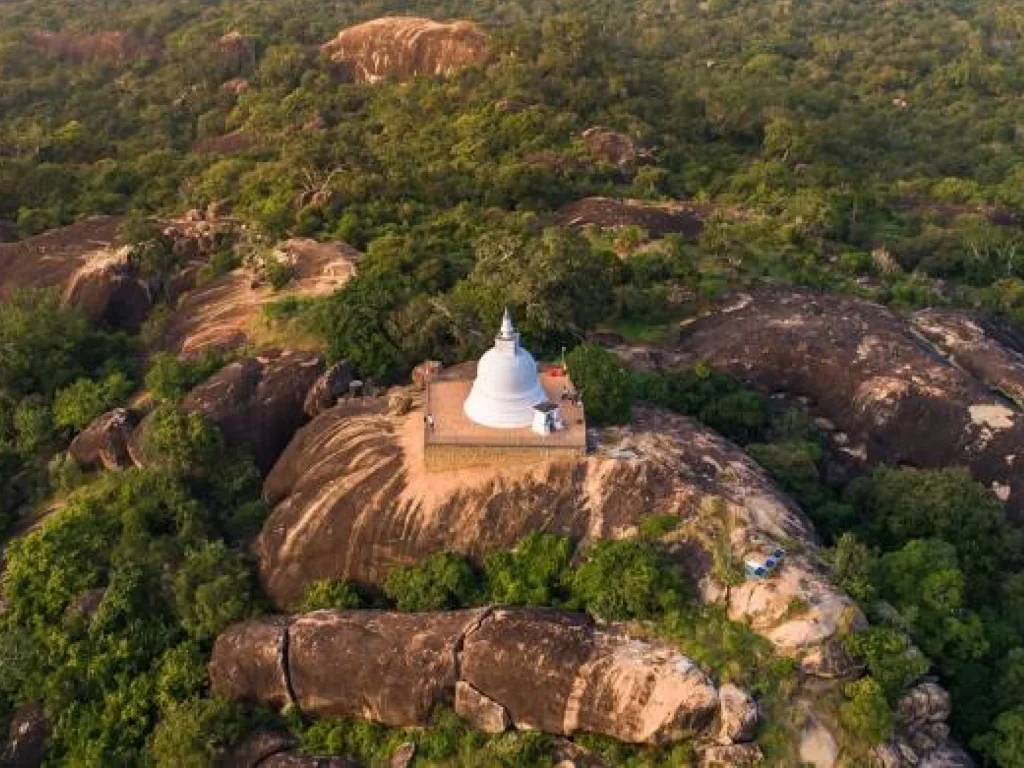
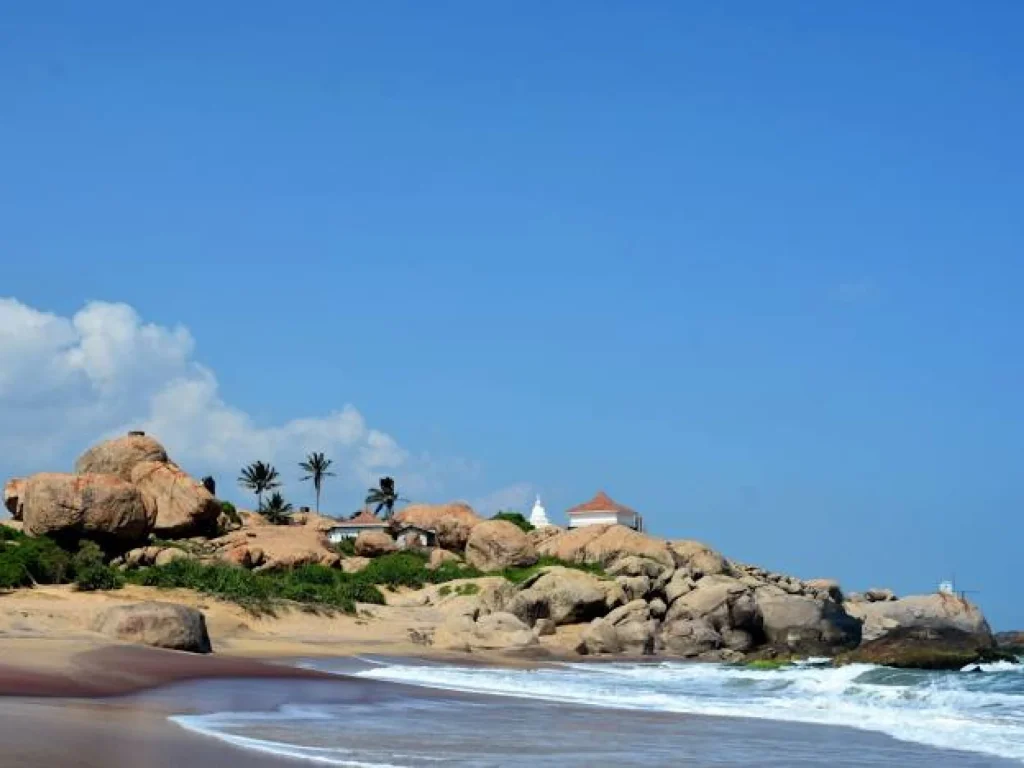
At the heart of Kirinda lies a remarkable hilltop Buddhist sanctuary, featuring a stupa and an imposing standing Buddha statue. This sacred site venerates Queen Viharamahadevi, a central figure in local folklore. Visitors to the Kirinda temple can behold breathtaking panoramic vistas of the deserted coastline and admire the extensive expanse of sand dunes.